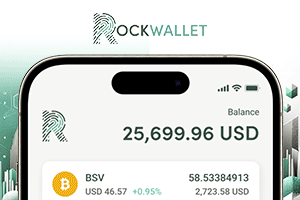|
Getting your Trinity Audio player ready...
|
The Bank for International Settlements (BIS) recently announced that its mBridge cross-border CBDC project had entered the Minimum Viable Product (MVP) stage. It also announced that the central bank of Saudi Arabia had joined China, Hong Kong, the United Arab Emirates and Thailand, becoming the fifth central bank to do so.
Since then, multiple prominent Chinese banks have disclosed their involvement in mBridge. The Bank of China (NASDAQ: BACHY) confirmed it sent the first transaction between the UAE and China in January. Other confirmed participants include the Agricultural Bank of China (NASDAQ: ACGBY), Bank of Communications (NASDAQ: BCMXY), China Construction Bank (NASDAQ: CICHY), Postal Savings Bank (NASDAQ: PSBKF), ICBC and the China Foreign Exchange Trade System.
China is connected to mBridge via its digital RMB system. Each country can connect in any way it wishes by utilizing its own CBDC.
How does mBridge work, and what’s the point?
mBridge is an initiative by the BIS, often called the central bank for central banks, to make cross-border payments faster and more efficient.
Using blockchain, mBridge enables participating central banks to exchange CBDCs seamlessly with real-time settlement. At present, settlement can take several days and often involves intermediaries, so mBridge will save on both time and costs.
mBridge is built on a permissioned blockchain platform, but the specific chain it will use has not been detailed. While it has been designed to be secure, scalable, and interoperable, only approved central banks can join, run nodes, and validate transactions.
What does mBridge mean for US Dollar dominance and sanctions?
Given its participants so far, mBridge could easily be taken as a challenge to U.S. financial power. However, while it may slightly reduce reliance on the dollar, it is not a direct threat to the ability of the U.S. and other powerful entities to impose sanctions.
If BRICS countries follow through and create their own blockchain settlement system, that would represent a real challenge. However, with mBridge, sanctions imposed by entities like the United Nations, United States, or European Union would still apply. Countries like Russia or North Korea could not use it to skirt sanctions or get around blockades.
In a nutshell, mBridge will enable the use of CBDCs for international settlement between participating countries, but it won’t create demand for these currencies. Since the USD accounts for 90% of forex transactions, 90% of cross-border transmissions through SWIFT and CHIPS (a virtual monopoly), and still accounts for 59% of central bank reserves, it will be a long time before demand for the USD changes.
That said, mBridge will create an alternative to outdated, slow, and expensive systems like SWIFT. It will reduce costs, speed up processing, and increase transparency in cross-border payments, all of which can only be seen as positives. Blockchain technology is finally being used to create positive change in the world—it’s about time.
To learn more about central bank digital currencies and some of the design decisions that need to be considered when creating and launching it, read nChain’s CBDC playbook.
Watch: Finding ways to use CBDC outside of digital currencies

 07-04-2025
07-04-2025 





